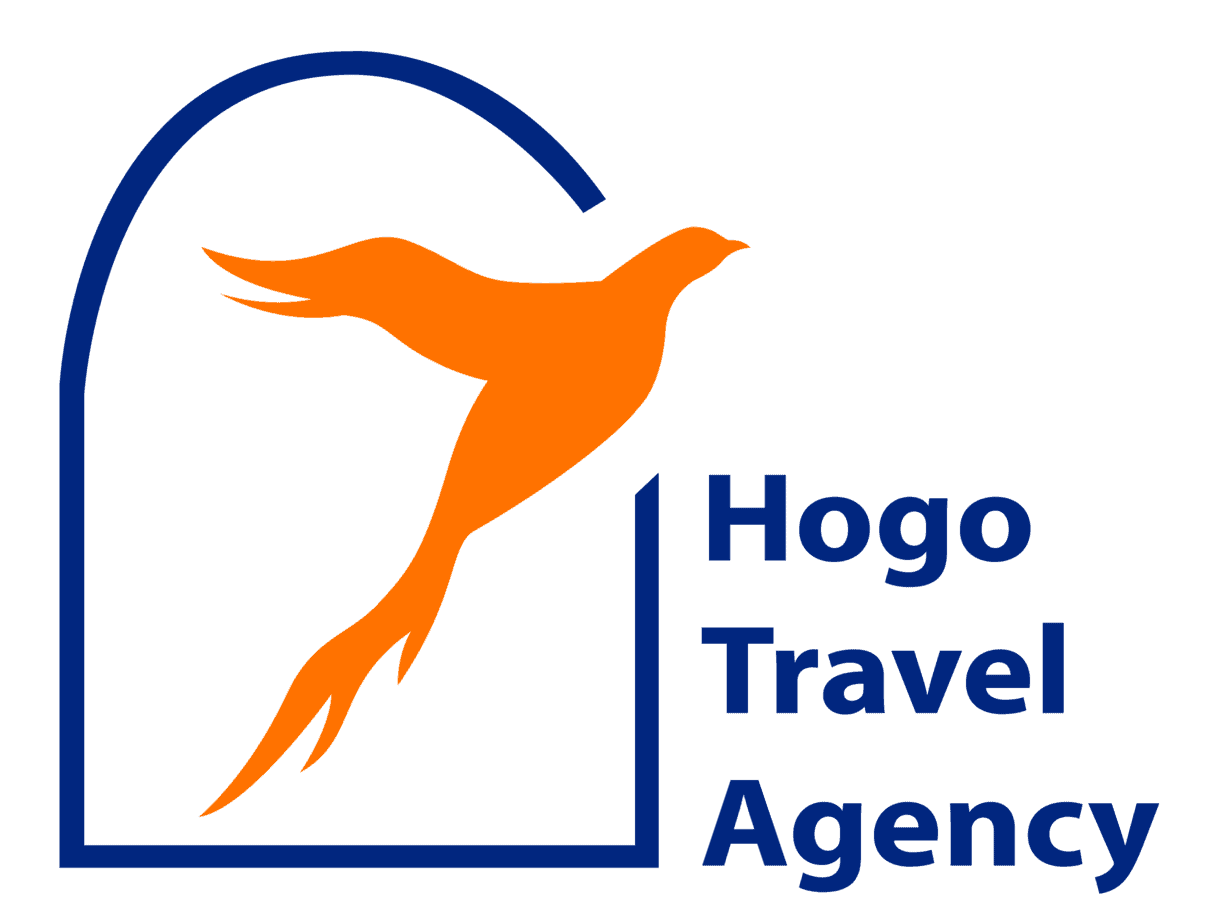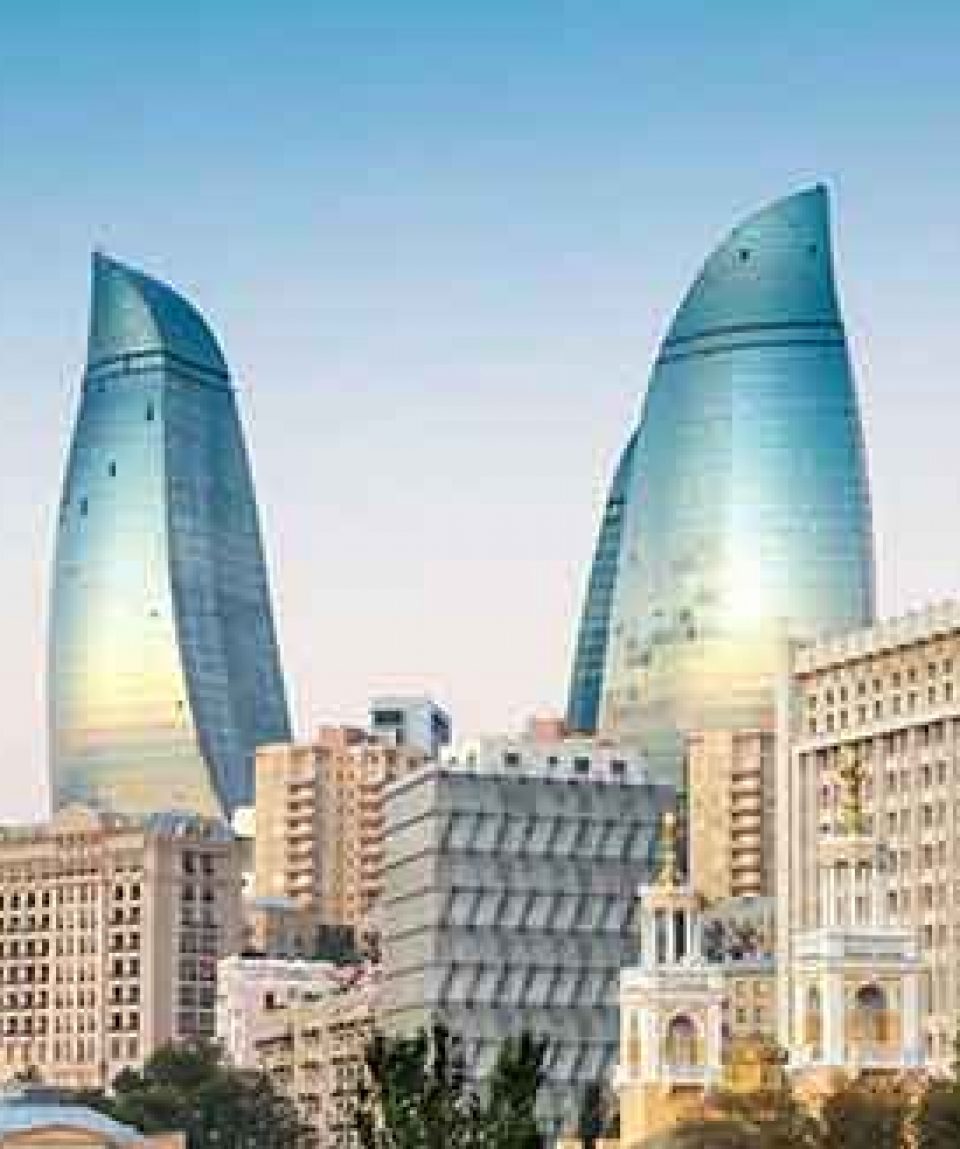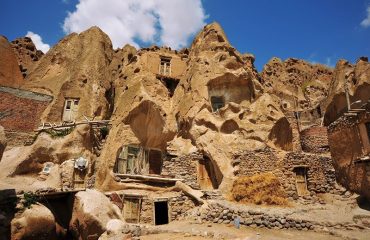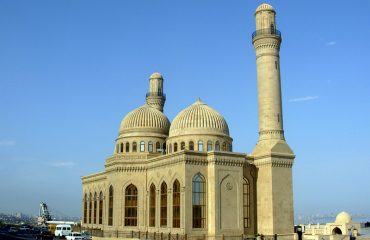Iran-Azerbaijan Tour
On this incredible tour we go to Azerbaijan and Iran and see some of the major tourist attractions of these countries. We first spend a full day of sightseeing in Tehran. Then we visit Hamedan and its important monuments. Our next stop is Zanjan and we will visit Gonbad-e-Soltaniyeh. Then we arrive in Tabriz and spend three days sightseeing the main attractions. We drive to Nakhchivan ,visit St. Stephanus Church and other major attractions of this autonomous region. We fly to Baku, visit Baku’s main attractions and also see the amazing view of Absheron Peninsula on the Caspian Sea. We visit the open air museum or Gobustan to see the rock paintings and the interpretive museum that illustrates the geologic changes that have occurred in the area. We will depart to Guba, visit Khinalig village and Krasnaya Sloboda village.
- Reviews 2 Reviews5/5
- Vacation Style Holiday Type
- Activity Level Fairly Easy
-
Azerbaijan
Historically, the name Azerbaijan is said to a larger region that includes parts of Iran and Azerbaijan. This country is bordered by the Caspian Sea in the east, by Armenia in the west, by Iran in the south, and Georgia and Russia in the north. There is an Azeri autonomous region by the name of Nakhchivan which is enclosed within the Republic of Armenia, it also has small area bordered with turkey. The highest mountain in Azerbaijan is Bazarduzu Dagi with the altitude of 4,485 m.
This country has an area of 86,600 km² and is slightly larger than Austria.
The population of Azerbaijan was estimated 9.7 million in the year 2016. The main religion is Islam, and the majority of people are Shi’a Muslims.
Baku is the capital and the largest city in Azerbaijan. 90% of people speak Azeri and 2% of them speak Russian.
Iran
Throughout history, the land known as Iran was called the Persian Empire. The first powerful dynasty in Iran was the Achaemenid Dynasty which ruled over a vast land from 550 to 330 BC. The first and most important king of this empire was Cyrus the Great. After the conquest of Alexander While Darius III was the king the reign of this dynasty came to an end and the Greek and the Hellenistic period began. Then the Parthian Dynasty took control of the ancient Persian territory and ruled for nearly 500 years followed by the Sassanid dynasty reign until 661 AD.
The Arabs conquered Iran and introduced Islam to the people in the 7th century. There were more invasions, first by the Turks and later by the Mongols. In the early 1500s local dynasties took control over the land including the Afsharid, the Zand, the Qajar, and the Pahlavi.
In the year 1979, the Pahlavi dynasty was overthrown by The Islamic Revolution. Iran’s government has since been used Islamic principles in its Constitution.
About Tour
On this incredible tour we go to Azerbaijan and Iran and see some of the major tourist attractions of these countries. We first spend a full day of sightseeing in Tehran. Then we visit Hamedan and its important monuments. Our next stop is Zanjan and we will visit Gonbad-e-Soltaniyeh. Then we arrive in Tabriz and spend three days sightseeing the main attractions. We drive to Nakhchivan ,visit St. Stephanus Church and other major attractions of this autonomous region. We fly to Baku, visit Baku’s main attractions and also see the amazing view of Absheron Peninsula on the Caspian Sea. We visit the open air museum or Gobustan to see the rock paintings and the interpretive museum that illustrates the geologic changes that have occurred in the area. We will depart to Guba, visit Khinalig village and Krasnaya Sloboda village.
- Day 1- Iran Arrival in Tehran
- Day 2- Iran Tehran
- Day 3- Iran Hamadan
- Day 4- Iran Zanjan
- Day 5- Iran 1st Day in Tabriz
- Day 6- Iran 2nd Day in Tabriz
- Day 7- Iran 3rd Day in Tabriz
- Day 8 - Azerbaijan 1st Day in Nakhchivan
- Day 9 - Azerbaijan 2nd Day in Nakhchivan
- Day 10 - Azerbaijan Nakhchivan, Baku, and Absheron
- Day 11 - Azerbaijan Baku
- Day 12 - Azerbaijan Baku and Gobustan
- Day 13 - Azerbaijan Baku and Guba
- Day 14 - Azerbaijan Departure
Accommodation Types
Finding a proper place to stay during your trip is one of the most important preparations before traveling which should be carefully examined from different aspects. Because in case the traveler is not satisfied with the quality of accommodation a bad memory would remain in his/her mind. Stay while traveling means to reside for one or more days in a place other than our own house. One of the primery features of this accommodation is security. In other words the place of stay must have enough security that the tourists could easily relax and put their belongings in that residence. In addition, other facilities such as restaurant, dry-cleaning and the like are some of the necessities of a good accommodation. Therefore, various types of accommodations based on the amenities exist all over the world which the tourists can choose based on the need or the budget they have for their place to stay. These are some types of accommodation:
Hostel
This sort of accommodation doesn’t have an age limit for reception, and is suitable for those who have a low budget for traveling. There are even single rooms with the minimum facilities required for a residence. Some of these hostels provide hot meals for the guests.
Hotel
The word hotel has a wide spectrum of meaning. Hotels based on their rate offer special amenities such as room services, laundry, and etc to their customers. In addition to meeting the needs of tourists, hotels have specific facilities for the families.
Capsule hotels
The idea of this type of hotel came from Japan in 1979 and today they exist in China and Singapore. This sort of accommodation is built of plastic or fiberglass in a singular size and is arranged on other cells like beehives. Each of these capsules is equipped with facilities such as a TV set and is a very good and proper choice and also a cheap accommodation for one night stay.
Bed and Breakfast
By staying in this type of accommodation which is common in the USA you go to local houses of each area and rent only one room from the whole building. This accommodation is economical and therefore is very common. The rooms are very similar to hotel rooms but they offer facilities at a lower price and you feel at home. The guests can even meet other people on breakfast table and start a conversation with them at the place.
Motel
A motel is another type of accommodation which is formed from the combination of two words “Motor” and “Hotel”. This kind of accommodation was first built for motor vehicle riders. The rooms are close to each other and there is a vast space for the parking lot and of course it is cheaper than a hotel.
Guest House
This word has a wide spectrum of meaning and has different interpretations throughout the world. In some regions it has the same meaning as hostel, bed & breakfast, or caravan. In some regions they are similar to hotels but at a cheaper price. In some countries, it is said to rental houses which are given to the tourists privately. In this case, the owner lives at a separate place but near the guest house.
Resort
This type of accommodation is built near tourist attractions like beach, desert, national parks, ski sites, and so on and is suitable for tourists who want complete relaxation and refreshment during their stay. These resorts have distinguished facilities such as swimming pool, gulf field, tennis court and etc. In some cases the area of the resorts cover several hectares of land.
Timeshare
This kind of accommodation is said to an estate which is rented and shared by several individuals and is used by them alternatively in different periods of time. The right to rent, use or the possession in a determined time period is clear for each person. Meanwhile, cleaning and protecting the estate in each time period is obliged to the person owning the place at that period.
Hospitality Exchange
This type is one of the most interesting types of accommodation while traveling in which the tourist must personally contact the related organization or institute to make the necessary coordination with a local or volunteer individual to stay at that person’s place. This kind of accommodation has a low cost and is the best option for people who travel on a low budget.
Caravan
Caravan is said to a small container vehicle which has all the necessary facilities for traveling and is attached to the vehicle. Caravan provides the possibility of residence and movement simultaneously. Some caravans even have the capacity of several people to stay.
Camping
It is the most popular and low-expense type of accommodation among young people in which the tourists tent, sleeping bag and other necessary tools are carried by the person and he/she ventures into the unknown.
Cottage/Villa Cottage
Cottage/Villa Cottage is an appropriate option for families who seek relaxation away from the crowd. It is so much bigger comparing to the hotel rooms and four people can stay there at the same time. Regarding facilities they have a kitchen, dining room, bed rooms, and etc and are more comfortable comparing to hotels or other options.
Dude Ranch
In the United States dude ranches are considered as seasonal accommodations in which you can experience the rural culture. During your stay you can even ride a horse in the wide pastures or go hunting in the forest or other areas along with the local guide.
Vacation Rental
Another economical type of accommodation for holidays is renting an apartment or villa. Most people travel in groups or by their family and tend to stay together. Therefore, renting an apartment or villa for a short time is so appropriate to these people.
House Sitting
The length of stay depends on the agreement between the landlord and the guest and he/she can stay for free based on the agreement and acceptance of part of the house keeping activities such as cleaning, gardening, pet keeping, and so on.
Not for all nationalities, unless you are a US citizen. Iranian visa for US passport holders is subject to particular regulations. At present the Iranian Foreign Ministry will only issue visas for US citizens to travel to Iran as part of a pre-booked, guided tour. That means US citizens cannot travel to Iran individually and they must be accompanied by a tour guide or a relative who can take full responsibility. Before the trip, you must send the itinerary in advance and follow it exactly. Due to these requirements, we recommend that it is better to apply 10 weeks before the travel date.
Guns and ammunition, alcoholic drinks, narcotics, , all horticultural and agricultural goods including seeds and soil; aerial photo cameras, transmitter-receiver apparatus, pornography, most films, cassettes, CDs and videos and any kind of fashion magazine. Of course, hunters who are travelling to Iran for hunting can get necessary permits for carrying their guns and ammunition via their travel agents beforehand.
Each trip is unique, and for determining what to bring it is better to consult the travel agency. However, these items are generally included: Clothes, phone charger, hair brush, camera, necessary pills, shampoo, towel, tooth brush and tooth paste, ear buds, nail clipper, map, and the like.
If your group wants to take some adventure on the trip linked to the activities or destinations in which we operate, please do not hesitate to communicate with us and we will try to create exactly what you desire. We are keen to help you in this way, as we have done in the past, this has pushed us forward towards making permanent tours based on your interests.
It is easy and simple. Just follow the four-step instruction:
- Step One: choose your destination
If you are ready to begin your trip to Iran, we are ready to help. It is really important to do some research and decide where do you want to go and what you want to do according to your age and interest. Our travel specialists are ready to provide you with the information you need to make your decision. A variety of catalogs of trips to different cities with destinations and purposes are also available on our website.
- Step Two: Send us a request
Tour packages are presented in four main categories: Cultural tours, Eco tours, Adventure tours, and Event tours. These packages have various destinations, duration and purpose to serve different interests. Just take an overall look at the travel packages and choose your tour. Remember that the prices can be modified according to the chosen standards of hotels and transportation. If you didn’t find the package that interest you, contact and inform us about cities that you are interested in and the sites you want to visit (see tailor-made tours). We can make your dream trip come true.
- Step Three: book your tour
After choosing your ideal package and specifying the number of travelers who come with you just set a date for it so that we can inform you of the required price of the package. Then a contract will be sent to you. Please print the contract, read it carefully, sign it and send us an image of the signed contract and images of the passports and of the tour participants via e-mail. Payment procedure will be announced at the time of booking.
- Step Four: get a visa
We have made this process easy for you. An information form will be sent to you by the agency. Return the filled form with an image of your passport attached to it. Leave the rest to us. You can get your visa in 10 working days. Your visa fee is 35 USD.
For more information take a look at our Visa page
Two different payments are required. One is the visa application fee which you send off with your visa application form. The other is the payment for collecting the visa from the Iranian embassy in order to get the visa stamped into your passport. If you post your passport to the embassy there will be an extra charge to post it back to you by recorded delivery. Its cost is not fixed and varies in different parts. It’s better to call the Embassy in your country.
Yes, there are several newspapers in English. Most of the times, there are available at hotel lobbies.
Iranian visa for US passport holders is subject to particular regulations. In a way that US passport holders cannot travel to Iran independently. US citizens are required to travel on escorted tours; either as part of a group, or on a tailor-made individual tour. An exact itinerary, to which you must follow is needed to be submitted in advance. So, make your travel arrangements at least 10 weeks before your planned travel date.
Those who have been to Iran know about the quality and variety of Persian kebabs and stews. There are different types of restaurants. You can find new spices and herbs you haven’t seen before, but Iranian dishes are not as spicy as the Indian foods. A moderate amount of them is added to the food just to make it more delicious. As there are not genetically modified vegetables and fruits in Iran, they taste the old flavors. The meat served in the restaurants is usually chicken, fish, lamb, and veal. Of course, you can find quail, turkey, and shrimp too, but no frog, pork, snake, dog or other sorts. It is prohibited to eat them in Islam and this is observed everywhere. The vegetarians can find cooked or raw vegetables at hotels and in restaurants. However, it is better to inform your tour guide about this matter so he could arrange it for you.





Tour well arrangedWonderful multi national trip arrangements, no issues and no hiccups in the trip, children enjoyed a lot. Jacob the tour guide was very friendly and super orator, explaining every bit very well.
Well Organized TripThis trip is well organized.From Tehran to Baku, Mud Volcanoes, Fire Temple and Burning Mountain.Our guide, Samir, was nice and knowledgeable. You’ll not get bore with his stories and facts.